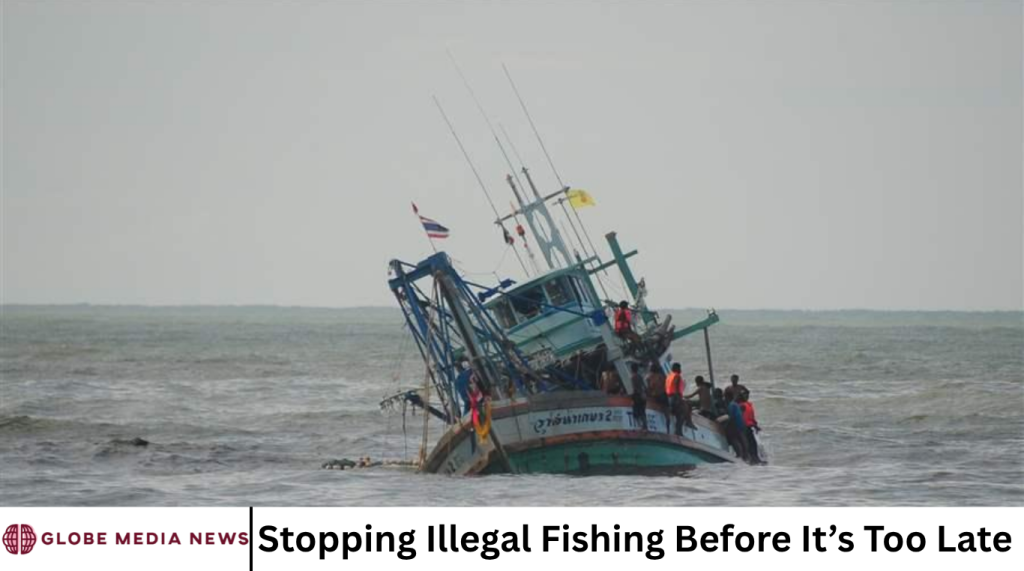Illegal, unreported, and unregulated (IUU) fishing is a global scourge—draining oceans of biodiversity, undermining coastal livelihoods, threatening food security, and fueling corruption and crime.
As fish stocks decline, millions lose income, and fragile marine ecosystems edge closer to collapse. But this crisis isn’t inevitable: coordinated legal, technological, economic, and community actions can turn the tide.
More Read: The 5 Most Active Dark Web Marketplaces to Keep an Eye On
Understanding the Scope of the Problem
- Economic loss: Illegal fishing costs nations up to $36 billion annually.
- Food and income insecurity: Some 520 million fishers and 2.6 billion consumers depend directly on fisheries.
- Environmental harm: Overfishing snuffs out key species, damages habitats, and disrupts ecosystems.
Root Causes of IUU Fishing
- Weak laws and enforcement: Under-funded agencies, corruption, vast ocean areas.
- “Dark fleets”: Vessels that disable AIS/VMS to evade trackers.
- Flag loopholes & subsidies: Some nations turn a blind eye; others incentivize overcapacity.
Legal and Policy Tools
- Port State Measures Agreement (PSMA): Stops illegal catch at entry—with 55 signatories.
- UNCLOS obligations: EEZ management, flag‑state duties, and dispute resolution via ITLOS.
- Regional cooperation: RFMO blacklists & name‑and‑shame, ASEAN data‑sharing, FISH‑i Africa, Operation Kurukuru in the Pacific.
Tech-powered Enforcement
- Satellite & AIS/VMS tracking: Public systems like Global Fishing Watch (200,000+ vessels) aid spot-and-pursue tracking .
- AI & analytics: Machine learning identifies fishing behavior patterns, dark fleets, and economic risk .
- Drones and hydrophones: Both aerial and underwater sensors help detect blast fishing and illicit vessels .
Finance & Market Sanctions
- Insurers as gatekeepers: Systems now flag high‑risk IUU vessels to deny insurance.
- Supply‑chain traceability: Blockchain, catch verification, and certifications (e.g. MSC) block illegal fish at first sale.
- Import regulations: EU, US (Seafood Import Monitoring Program), and others enforce strict documentation.
Community & NGO Engagement
- Local patrols: Community-led squads (e.g. in Tanzania, Philippines) curb blast fishing.
- Activist patrols and documentation: Sea Shepherd’s direct-action missions, evidence collection support enforcement.
- Education campaigns: Public awareness shifts consumer behavior and strengthens political pressure.
Industry & Consumer Responsibility
- Retail standards: Big retailers are starting to demand traceable supply chains.
- Eco-labeling & certifications: Trusted marks incentivize legal, sustainable fishing.
- Responsible dining: Sustainable seafood guides help consumers make informed choices.
What Governments Can Do
- Ratify/enforce international treaties (PSMA, UNCLOS).
- Finance MCS capacity in coastal states.
- Invest in shared satellite, AI, aerial resources.
- Penalize illegal vessels through port access, fines, insurance bans.
- Support community patrols and NGOs to complement state enforcement.
What the Private Sector Can Do
- Underwriters: Require data-backed risk in underwriting decision.
- Retail & processors: Mandate traceable sourcing.
- Tech firms: Offer satellite, AI, blockchain tools for compliance.
- Seafood certification bodies: Expand coverage for targeted species.
Challenges & Risks Ahead
- Technological arms race: Dark fleets spoof AIS, use jamming, drones.
- Cyber‑attacks on monitoring systems.
- Coordination gaps: Disparate laws, poor data‑sharing and geopolitical friction.
- Need for sustained funding and political commitment.
Frequently Asked Questions
What exactly is IUU fishing?
IUU stands for Illegal, Unreported, and Unregulated fishing—covering everything from poaching no‑take zones to undeclared catches.
How much fish is caught illegally each year?
Estimates suggest illicit fishing costs up to $36 billion annually, affecting billions of consumers.
What’s a “dark fleet”?
These are vessels disabling AIS/VMS to evade detection. NGOs use satellite data and ship-behavior algorithms to expose them .
Can technology really stop it?
Tech is powerful—but needs legal backing, funding, and global cooperation to be effective.
How does illegal fish end up on our plates?
Weak supply‑chain controls allow tainted fish to enter markets mixed with legal catches. Traceability and documentation are key fixes .
Do community patrols actually work?
Yes—community-led efforts in places like Tanzania and the Philippines cut blast fishing from ~8 incidents a day to zero .
How can I help as an individual?
Choose certified wild‑caught or legal seafood, support NGOs, call for stronger regulations, and push retailers to demand traceability.
Conclusion
Stopping illegal fishing demands a multi-layered global strategy—legal frameworks, regional cooperation, satellite tracking, AI, financial accountability, community engagement, and consumer responsibility. Success stories—from Operation Kurukuru in the Pacific to blockchain pilots for traceability—show progress is possible. But time is running out. With continued investment, collaboration, and vigilance, we can indeed stop illegal fishing before it’s too late.

